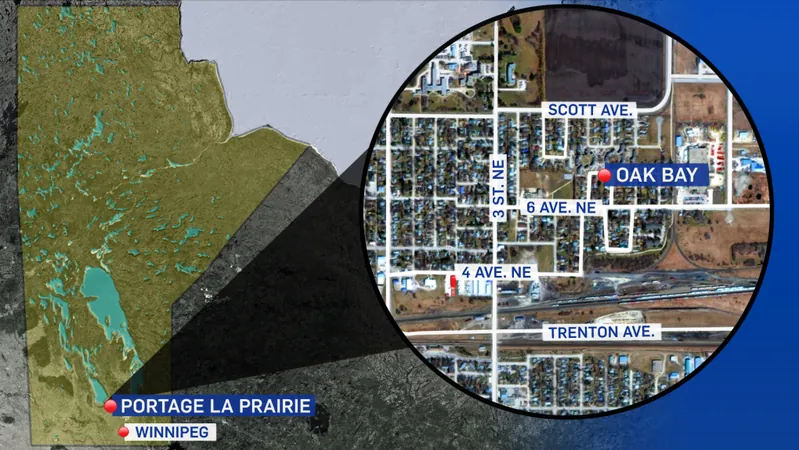
Explosive Developments in North-Western Syria: Rebels Surge as Government Weakens!
2024-12-02
Author: Jacques
In a dramatic turn of events, rebel forces have launched their largest offensive against the Syrian government in years, capturing significant territories across north-western Syria, most notably the strategic city of Aleppo. The sudden withdrawal of Syrian military troops has emboldened the rebels, who are now engaged in intense battles near the pivotal city of Hama. As tensions escalate, Russia, a key ally of the Syrian government, has commenced air strikes against rebel positions.
Why Have We Reached This Critical Juncture?
The roots of the conflict in Syria can be traced back to 2011, when a peaceful pro-democracy uprising against President Bashar al-Assad spiraled into an all-out civil war. This prolonged conflict has led to staggering loss of life, with over half a million casualties and 12 million individuals displaced, including approximately five million who have sought asylum abroad.
In recent years, it seemed as though the war had reached a tentative conclusion, with the Assad regime regaining control over substantial urban territories aided by military support from Russia, Iran, and Iranian-backed militias. Yet, significant portions of the country remain outside government control, particularly in northern and eastern regions held by a U.S.-backed Kurdish alliance.
The Battle for Idlib and Aleppo
The rebel forces' last stronghold lies within the north-western provinces of Aleppo and Idlib, which border Turkey and house over four million people, many of whom are displaced. This region is primarily governed by the Islamist militant group Hayat Tahrir al-Sham (HTS), originally known as al-Nusra Front before its rebranding in 2016 after separating from al-Qaeda.
Despite its contentious origins, HTS has become a significant player in the area, consolidating power by eliminating rival groups, including remnants of al-Qaeda and the Islamic State (IS). Their ultimate aim remains the overthrow of Assad and the establishment of an Islamic administration. However, they had largely refrained from large-scale confrontations until recently.
Reasons Behind the Rebel Offensive
The offensive was sparked by a series of provocations and bolstered by the current vulnerabilities of the Syrian government. Despite a ceasefire brokered by Turkey and Russia in 2020, tensions have been simmering. Recent actions by HTS indicate a strategic calculation to exploit the moment when government forces seem preoccupied and weakened.
Compounding troubles for Assad's forces, Iranian-backed Hezbollah has faced setbacks due to escalating Israeli offensives, undermining their capacity to support government forces. Russia's ongoing commitment to the war in Ukraine further sidelines its influence in Syria, leaving Assad's regime more exposed than ever.
Government and Allies’ Reactions
In response to the offensive, President Assad has vowed to "crush" the rebels, labeling them as "terrorists." He has accused Western nations, particularly the U.S., of attempting to reshape the geopolitical landscape of the region. In a conversation with Iran's president, Assad reaffirmed Iran's pivotal role in supporting his government, while Iranian officials expressed a commitment to safeguarding Syria's sovereignty.
Russia, through its spokesperson, has echoed similar sentiments, characterizing the situation around Aleppo as an affront to Syrian sovereignty and urging the restoration of constitutional order in the region.
As the conflict unfolds, the ramifications extend beyond Syria's borders, with potential implications for regional stability and the interactions between global powers engaged in this long-standing crisis. The world watches closely as north-western Syria becomes a focal point of renewed hostilities, with many questioning whether this marks a significant turning point in the war-torn country's future.









 Brasil (PT)
Brasil (PT)
 Canada (EN)
Canada (EN)
 Chile (ES)
Chile (ES)
 España (ES)
España (ES)
 France (FR)
France (FR)
 Hong Kong (EN)
Hong Kong (EN)
 Italia (IT)
Italia (IT)
 日本 (JA)
日本 (JA)
 Magyarország (HU)
Magyarország (HU)
 Norge (NO)
Norge (NO)
 Polska (PL)
Polska (PL)
 Schweiz (DE)
Schweiz (DE)
 Singapore (EN)
Singapore (EN)
 Sverige (SV)
Sverige (SV)
 Suomi (FI)
Suomi (FI)
 Türkiye (TR)
Türkiye (TR)